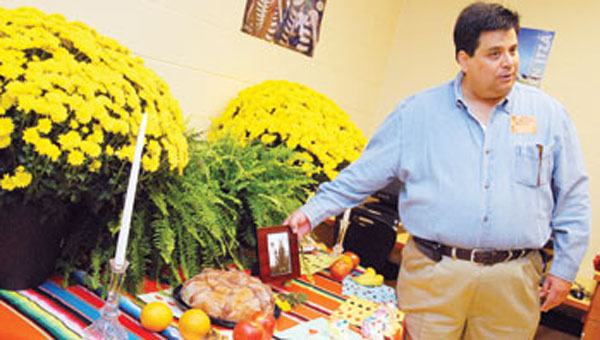Students learn traditions of ‘day of the dead’
Published 11:13 pm Saturday, October 16, 2010
Candy skulls decorated with frosting, an altar with pictures of deceased loved ones, and a trail of flower petals that leads spirits back to their homes.
These are just part of the holiday known in Mexico as “Dia de los Muertos,” or the Day of the Dead.
Students in Spanish classes at Ironton High School got a lesson on the holiday Friday from Miguel Monroy. As a part of Hispanic Awareness Month, Monroy, of Coahuila, Mexico, was in town to speak at Ohio University Southern and at the Lawrence County Chamber of Commerce dinner on Thursday evening. He works with the Southeast Chamber of Commerce.
Monroy outlined the differences between Halloween and the Mexican holiday. At Oct. 31 and Nov. 2 respectively, the two are close together on the calendar, but Monroy said the Day of the Dead is more like another American holiday, Memorial Day.
“How do we celebrate it? We visit the cemetery,” Monroy said. “Ooh, spooky.”
Besides visiting cemeteries, Mexicans also make altars for loved ones who have died. The altars are filled with things the person liked while they were alive. They also have flowers and tissue paper decorations as well as candy skulls and bread. The trail of flower petals leads the spirit to his or her family home.
It’s assumed that the spirits consume the essence of the altar.
Like Halloween, the Day of the Dead comes from the beliefs of early cultures that are mixed with Christianity, Monroy explained.
Monroy was introduced to the class by OU professor Dave Lucas, who happens to be Spanish teacher Carissa Weber’s stepfather.
Monroy spoke to all of Weber’s Spanish classes Friday.
He also talked about Mexico’s connection to the United States.
“You are like our older brother, the U.S.,” he said. “We admire you a lot. We admire your culture and economics. We really appreciate a lot of things from you.
“Unfortunately there are issues. We have failed to keep our workers home and shame on us,” Robles said.
Robles said it’s important for students to learn about Mexican culture because the two countries are interdependent.
For instance, while the U.S. economy has been suffering, so has the economy in Mexico, he said after the presentation.
“If you don’t do good, we will not do good,” he said.





